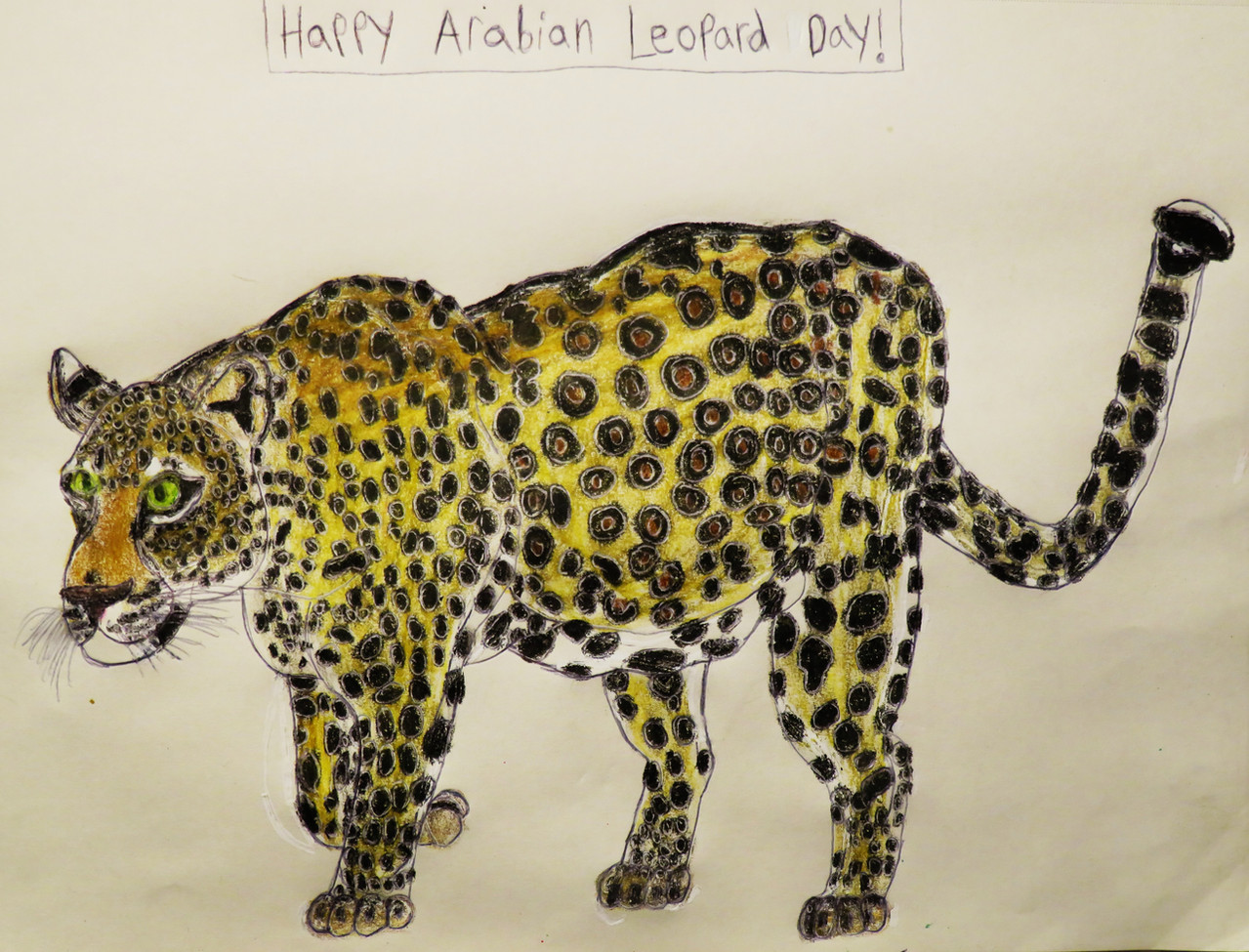HOME | DD
 Sabreleopard — Arabian Leopard Day
Sabreleopard — Arabian Leopard Day

#bigcat #conservation #endangered #endangeredspecies #leopard #criticallyendangered #arabianleopard #wildfelids #criticallyendangeredspecies #pantherapardusnimr #arabianleopardday
Published: 2024-02-10 07:24:04 +0000 UTC; Views: 984; Favourites: 1; Downloads: 0
Redirect to original
Description
Just something to celebrate Arabian Leopard Day, a day when we celebrate and give appreciation to a rare, large, spotted cat that lives in the mountains and deserts of the Middle East and to spread the awareness of this cat's existence, the threats it faces, what's being done to save this endangered species, and what we can do to help. Arabian leopard (Panthera pardus nimr) is a leopard subspecies that is native to the Arabian Peninsula. One feature that easily tells the Arabian Leopard apart from other leopard species is its fur which varies varies from pale yellow to deep golden, tawny or grey and is patterned with rosettes. Despite being the largest cat in the Arabian Peninsula, the Arabian leopard is the smallest leopard subspecies today. The Arabian leopard leads a solitary life, just like any leopard subspecies, unless females are with cubs. Even though they are predominantly nocturnal, Arabian leopards are sometimes also seen in daylight. The Arabian Leopard's main prey are small to medium-sized animals, which includes Arabian gazelle, Nubian ibex, Cape hare, rock hyrax, porcupine, Ethiopian hedgehog, small rodents, birds, and insects. The Arabian leopard's main competitors are the caracal and the Arabian wolf. This leopard subspecies used to be widely distributed in rugged hilly and montane terrain until the late 1970s, and it's thanks to its most feared enemy: Man. In fact, the Arabian leopard is listed as Critically Endangered, with its population being severely fragmented and thought to decline continuously, with an estimated 45–200 individuals since 2008 in three isolated subpopulations that are restricted to western Saudi Arabia, Oman and Yemen. Today, the Arabian Leopard is most threatened by poaching (both of the cat itself and its prey), habitat loss, and deforestation, along with development projects, inbreeding, infertility, and poisons that is meant for Arabian wolves and striped hyenas. Even natural competition with caracals and Arabian wolves threatens the leopard population, thanks to poaching of the cats by humans. Another threat is retaliatory killing in defense of local livestock (as leopards start to prey more on livestock, like goats, sheep, donkeys and even young camels). Despite the threats, however, there is still hope for this leopard through the hands of conservation. Camera traps and radio-collars help to keep track of the numbers of leopards in the areas. Captive breeding in zoos and/or conservation breeding centers, especially in the UAE and Saudi Arabia, is also helping the number of leopards to repopulate. Due to the fact that the Arabian leopard's geographic range is poorly understood and limited, a detailed study of leopard distribution and habitat is highly needed for the management of the species. The ecological information that's required includes the data on feeding behavior, range use and reproduction. This information is of great importance to the survival of the species (or, more likely, subspecies). There are many sites that are already surveyed and are considered to be suitable for preservation for Arabian leopards in the plan adopted by the national commission for wildlife conservation and development. These suitable areas include Jebel Fayfa, Jebel Al-Qahar, Jebel Shada, Jebel Nees, Jebel Wergan, Jebel Radwa and Harrat Uwayrid. A successful conservation strategy must also promote the awareness of the importance of leopard conservation, employing the media and perhaps other sources for basic education programs. The support and involvement of people living close to leopard habitats are vital for these efforts. Since the local people depend on their livestock which could be killed occasionally by the leopards, compensation for lost livestock from leopard predation should be considered (even though it is not always practical). Revenue from sources, like hunting rights and ecotourism, and services, like roads and school employment, in protected areas would encourage local residents to participate in conservation for leopards. Furthermore, well-managed protected areas will ensure the continued survival of the leopard subspecies until other factors enhancing its survival become effective. Public awareness, fruitful consideration of the needs of local people and ecological studies may take years to be useful. In Yemen, efforts are underway to conserve Arabian leopards at two sites, which include Hawf Protected Area. In Saudi Arabia, authorities have undertaken efforts to create Sharaan Nature Reserve, a wildlife sanctuary for the leopards in the area of Al-`Ula. Other than that, habitats and prey species that the leopards depend on could (and would) be restored within the reserves. We too can help the Arabian leopard avoid extinction. In fact, here's what you can do to help Arabian leopards:
1. Take action (one easy step is either by writing a letter or signing a petition to lawmakers to protect Arabian leopards and their habitat).
2. Support conservation efforts put to place protecting Arabian leopards and habitat (and even adopting one).
3. Choose and buy eco-friendly products from companies that help support wildlife and wild habitats.
4. Avoid buying products made from Arabian leopard parts (or any endangered wild animal) and help prevent the wildlife trade and black market.
5. Spread the awareness of these elusive and rare spotted cats, the struggles they face, and how we can help them.
6. Visit your local zoo to learn more about Arabian leopards (as well as other leopard subspecies) and other wildlife they share their mountain home with.
Other than that, Happy Arabian Leopard Day!

























